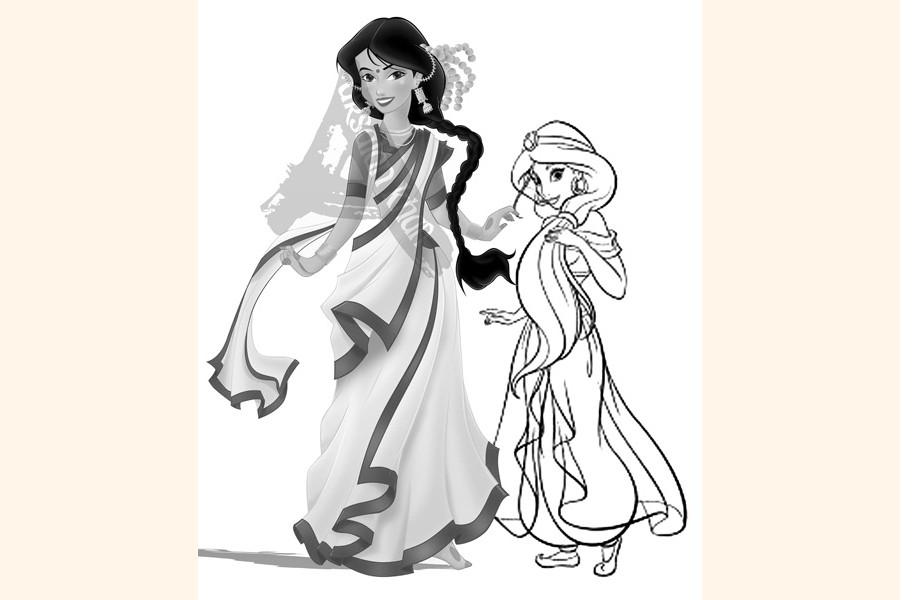One of the phenomenal changes has happened in sartorial preference of the Bangladesh people, particularly the younger generation. Youths and teenagers except only those madrasha-going students wear trousers, shirts or T-shirts like their peers in the Western world. A century or two ago, this was unimaginable. Dressing or clothing style develops or evolves suiting to the weather patterns of a locality or country. Even in a country, the same clothes are unsuitable. The clothes in demand in Rajasthan's desert area cannot meet physical requirement of inhabitants in the Kashmir valley or Ladakh and Leh.
Following the same principle, clothes in this part of the world were considered as dispensable as possible. Loin clothes were most men's attire and shari with no petticoat or blouse was enough for covering a woman's body. It was the first Indian ICS Satyendranath Thakur, Rabindranth's second eldest brother who with help from his wife Jnanadanandini Devi had to invent undergarments for her when the couple had to move to Bombay. Now the blouse has gone through transformation of styles and even foreigners appreciate the grace of Bangalee women in sharis.
No, men's attire here could not similarly compete with western clothes either in style or convenience. So far as comfort is concerned, the western trouser will definitely rank lower compared to free flowing thin and loose garments people here once used. Now that the upper class has been keen to imitate the Western style, everyone down the ranks is following the cue. The result is unreserved preference for dress of the West, although not many would go as far as a necktie to enhance sartorial elegance. But most people would not mind wearing a coat in the winter.
How did this transformation in dress occur? Choice of dress is inseparable from affordability. Even four decades ago, only a handful of people could afford pants and matching shirts. It is the explosion of readymade garments manufacturing units that has been instrumental in making this happen. Not all the clothing articles factories produce can be shipped for various reasons -chief among those being the rejection on account of specification. Some are considered defective and then orders are cancelled because of failure to meet the deadline. Thus loads of fresh garments come to the domestic market. These are astonishingly cheaper. The little defects such clothes have are not discernible by naked eyes.
So the RMG has revolutionised the country's clothing habit in no small measure as a by-product. But how? This is where enterprises of scale of economy leave their Midas touch on related areas. A large number of youths have taken to the retail business of such garment articles. The problem with them is that most of them have limited capital and cannot afford renting a permanent outlet. They operate on footpaths. But this is illegal and their compulsion is so overpowering they would not back out in the face of eviction from time to time.
There has been a cat-and-mouse game over the decades with the city corporations coming hard upon these small traders, particularly in the city's hub, at times. But now the business has sprawled ubiquitously in most blocks of the city -even to the unlikely corners. This is evening trade. In the afternoon smart and moderately educated youths spread out their wares on manually driven vans. They are innumerable in numbers and with every passing day their number is rising. They occupy roadsides or segments of roads or footpaths and operate their business either under street light or that of their own arrangement with mini beads of bulbs of Chinese origin.
Clearly, these enterprising youths -some of them with fairly good education -are well behaved, courteous and know how to deal with customers. Their customers too are mostly youths of the same age who can have an imitation of the brand item at a throw-away price. It is no mystery that the business is not only thriving but bursting out of seams. Here is a clear indication that many of such youths could do well in trade and commerce if they had enough capital. A few of them move up the trading spiral to change their lot but not all of them are equally lucky. It is time their case were reviewed for their gainful employment.


